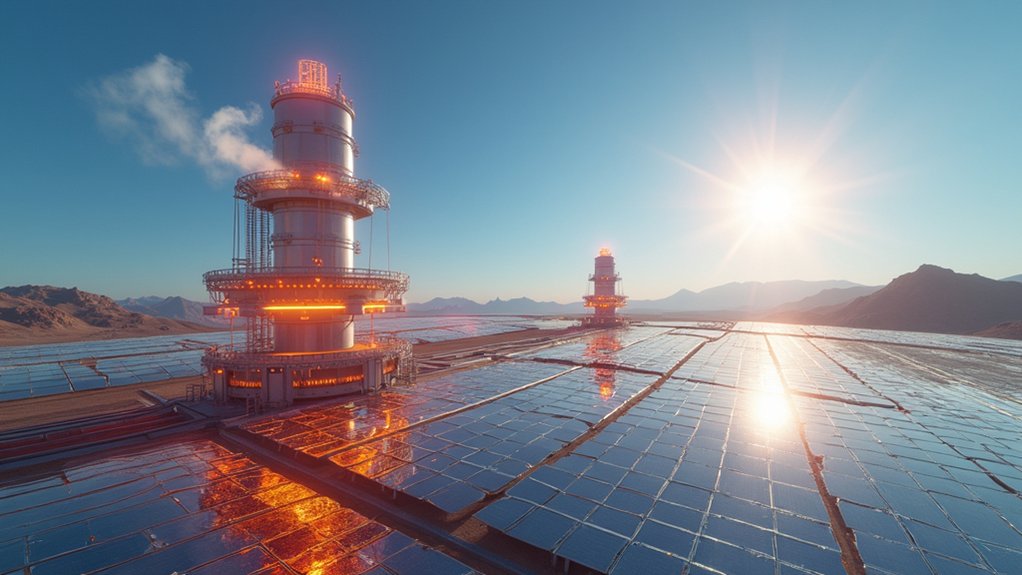Coca-Cola and Fuji Electric’s groundbreaking hydrogen-powered vending machine requires no electrical outlets. Debuting at the 2025 Osaka Kansai Expo, it generates electricity through hydrogen-oxygen reactions, consuming half the power of traditional machines. The cordless wonder handles up to 1,000 bottles daily using replaceable hydrogen cartridges. Sleek LED lighting and vertical bottle display create visual appeal. It’s basically a “concept car” for vending—impressive tech that faces hurdles in widespread adoption. The future of refreshment might just be unplugged.
Innovation fizzes at the intersection of beverage giants and clean energy. Coca-Cola Bottlers Japan Inc. and Fuji Electric Co. have developed something that sounds straight out of science fiction—a vending machine powered by hydrogen. No cords. No plugs. Just clean energy that produces zero carbon emissions while keeping your favorite beverages ice cold. Pretty neat, huh?
Innovation meets sustainability as Coca-Cola’s hydrogen-powered vending machines eliminate cords while keeping drinks frosty with zero emissions.
The machine generates electricity through a simple chemical reaction between hydrogen and oxygen. It consumes roughly half the electricity of traditional vending machines. Replaceable hydrogen cartridges keep it running. Talk about cutting the cord.
This isn’t just some flashy gimmick. The hydrogen-powered machine solves a real problem. It can operate in locations without direct electrical connections. Off-grid vending is now possible. The technology made its debut at the Osaka Kansai Expo, which opened March 18, 2025. With the expo featuring a total of 252 vending machines, this innovation stands out as a glimpse into the future. Each machine can handle up to 1,000 bottles per day. That’s a lot of thirsty customers.
Beyond the practical benefits, these machines look cool. They feature an evolutionary aesthetic design with LED lights and sound systems for an immersive customer experience. Your bottle even gets presented vertically. Because why not add some theater to buying a soda?
Of course, there were challenges. Engineers had to simulate hydrogen fuel cell systems with lithium-ion batteries and safely integrate everything within the cooler. Not exactly a weekend DIY project. Like geothermal energy’s impressive 96% capacity factor, these hydrogen machines offer remarkable reliability compared to conventional options.
Don’t expect these at every street corner just yet. Commercial deployment faces hurdles. Cost considerations and limited hydrogen infrastructure mean widespread adoption isn’t immediate. Think of it as a “concept car” for vending machines—impressive but not mass-produced.
Still, as the world’s first hydrogen-powered vending machine, it’s already making waves. According to The Verge’s coverage, this sustainable technology breakthrough was reported just three days ago, highlighting its novelty in the market. Competitors are watching closely. The beverage industry might never be the same. Zero emissions while grabbing your favorite drink? Coca-Cola’s hydrogen machine proves sustainability doesn’t have to suck.








